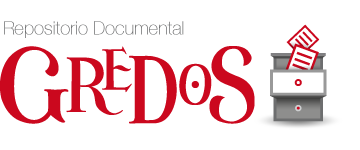Compartir
Título
DIAGNÓSTICO ACERCA DEL USO DEL OCIO Y EL TIEMPO LIBRE ENTRE LOS ESTUDIANTES DE LA UNIVERSIDAD NACIONAL EXPERIMENTAL DEL TÁCHIRA
Otros títulos
DIAGNOSIS ABOUT THE USE OF LEISURE AND FREE TIME AMONG THE STUDENTS OF THE UNIVERSIDAD NACIONAL EXPERIMENTAL DEL TÁCHIRA
Autor(es)
Materia
ocio
tiempo libre
motivación
comportamiento
estudiante
Fecha de publicación
2017
Editor
Sociedad Iberoamericana de Pedagogía Social (Barcelona, España)
Citación
Sandoval, N. (2017). Diagnosis about the use of leisure and free time among the students of the Universidad Nacional Experimental del Táchira. Pedagogía Social. Revista Interuniversitaria, (30), 169-188.
Resumen
El ocio y el tiempo libre son dos conceptos de suma importancia en el mundo
actual. Por un lado, el ritmo del día representa un reto para el cumplimiento exitoso de todas
las actividades que al final de la jornada derivan en agotamiento; frente a esto, la tecnología,
que invade cada espacio de la vida, ha facilitado a través de sus diferentes aplicaciones, que
al alcance de un clic puedan realizarse muchas tareas. Esta realidad se da también entre los
jóvenes universitarios, especialmente, los de la Universidad Nacional Experimental del Táchira (UNET); estos estudiantes suelen quejarse de la poca disponibilidad de tiempo para involucrarse en actividades que les remitan al esparcimiento. Con frecuencia optan por buscar
alternativas con el fin de liberar sus tensiones. Habitualmente manifiestan incapacidad para
manejar adecuadamente su tiempo; tampoco su universidad ha logrado definir líneas precisas
para enmarcar ese tiempo libre. Por esta razón, se delineó el presente estudio cuyo objetivo
principal fue diagnosticar el uso del ocio y el tiempo libre en los estudiantes de la UNET. Se
utilizó un paradigma cuantitativo para la investigación, dándole al estudio un carácter descriptivo. De una población de 7145 estudiantes de la UNET cursantes de las carreras de Ingeniería
y Arquitectura, se tomó con una muestra aleatoria de 365 estudiantes. Se utilizó el cuestionario como técnica de recolección de datos y se establecieron las variables motivación y uso del
ocio y tiempo libre, ambas apoyadas en sus subindicadores. Fue validado a través del juicio
de expertos, y la confiabilidad quedó determinada a través del estadístico Alfa de Cronbach,
con un valor obtenido de 0.72, que determina una alta confiabilidad. Los datos se procesaron
mediante el estadístico SPSS versión 15.0 Con respecto a la motivación, los resultados manifiestan que la necesidad de logro no es muy alta, y la de poder, en relación con las actividades de ocio, parece no ser determinante en la muestra. La necesidad de afiliación predomina, y la
de reconocimiento está fuertemente ligada a lo académico y a lo intelectual. La actividad que
más suelen realizar durante el tiempo libre y de ocio es salir con los amigos; frente a la lectura
que representa el menor interés. Los momentos de ocio se dan con mayor frecuencia durante
los fines de semana, de una a tres horas diarias, considerado por ellos como suficiente. No
hay mayores diferencias en las opciones seleccionadas por género y carreras. El desglose de
estos resultados permitió proponer pautas para iniciar el desarrollo de programas dirigidos al
buen uso del ocio y el tiempo libre.
Leisure and free time are two concepts of great importance in today’s world.
On one hand, every day’s rhythm poses the challenge of successfully completing all activities
resulting in exhaustion at the end of the day. On the other hand, technology has invaded every
facet of life through its many applications, since many tasks can be performed within reach of
a click. This reality was also especially found among students from The Universidad Nacional
Experimental del Táchira (UNET); these students often complain about the limited availability
of time to engage in recreational activities. Often they choose to seek alternatives in order to
release the tension.They usually express inability to properly manage their time, neither their
university has managed to define precise lines to frame this time. For this reason, the present
study -whose main objective was to assess the use of leisure and free time by UNET students
- was outlined. A quantitative paradigm for research was used, giving the descriptive nature of
the study.A random sample of 365 students was taken, out of a 7145 UNET student’s population from Engineering and Architecture majors. As data collection technique a questionnaire
was used and the motivation and use of leisure and free time variables were established,
both supported by corresponding sub-indicators. The questionnaire was validated by expert
judges, and the reliability was determined through Cronbach’s Alpha obtaining a value of 0.72,
which determined high reliability. The data were processed using the statistical program SPSS
15.0. Regarding motivation, the results showed that the need for achievement was not high,
and the need for power, in relation to leisure activities, did not seem to be determinant in the
sample. The need for affiliation prevailed, and recognition is strongly linked to academic and
intellectual aspects. Going out with friends was the most often performed activity during leisure and free time; while reading posed the lowest interest. Leisure time occurred more often
during weekends and students spent one to three hours per day in leisure time which they
considered as sufficient. There were no major differences related to gender and degree in the
selected options. The interpretation of these results provided the proposition of guidelines
to start developing programs for the proper use of leisure and free time.
URI
ISSN
1989-9742
DOI
10.7179/PSRI
Versión del editor
Colecciones












